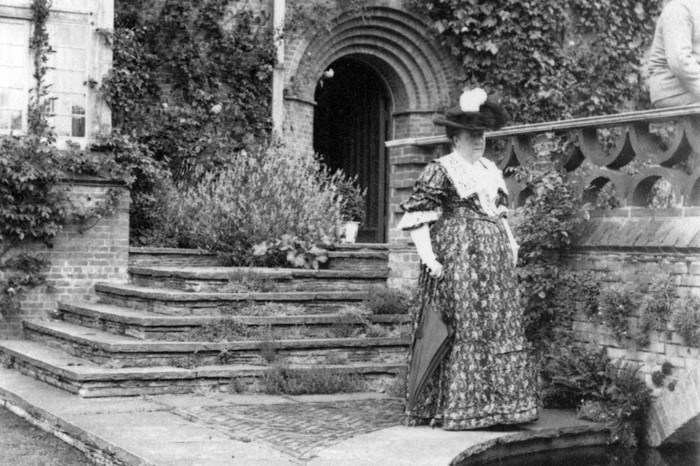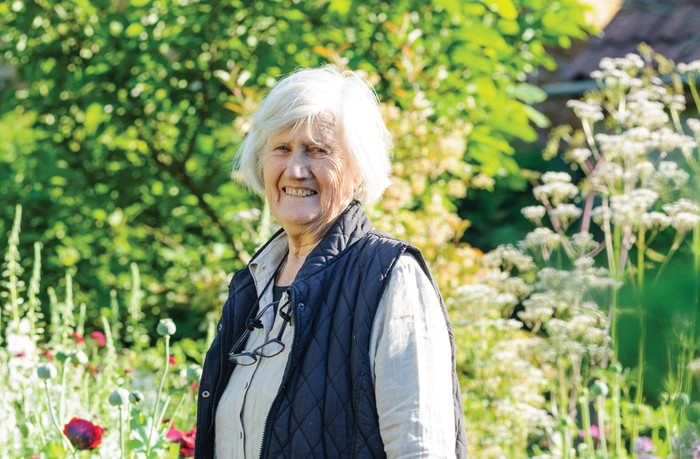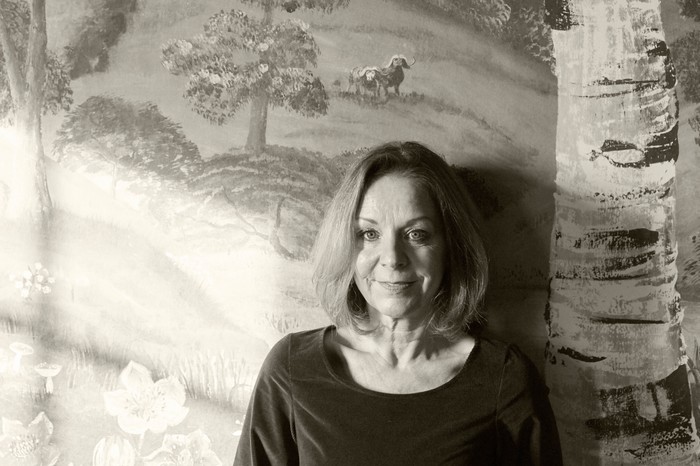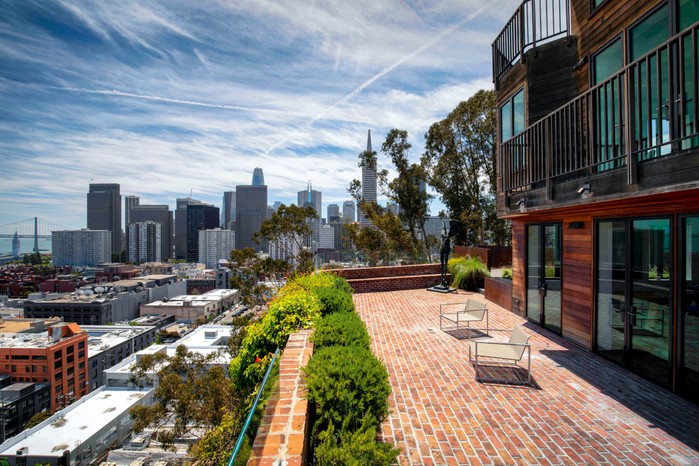
Inspiring female garden designers in British history
Here, we list some of the most inspiring female gardeners and garden designers in British history for International Women's Day
There are many incredible women who have, and are still dominating the world of gardening, so for International Women's Day we've listed some of the key, female garden designers in British history that still influence the way we garden today, alongside some of the top women garden designers who are currently succeeding in the industry. Read our piece on the key dates of women in gardening.

19th century female gardeners
From the middle of the 19th century, it is largely women who have shaped the way we think about gardens.
Gertrude Jekyll (1843-1932)

No garden designer has had more enduring influence on the British garden: for a century her painterly way of grouping plants in large, informal masses of colour; her insistence on harmony and rhythm; and her embrace of formal structure softened with loose, richly textured planting, has been the sine qua non of the successful British garden. Gardens were considered a series of carefully made pictures; and only really in the last decade has colour been supplanted as the guiding principle of design.
Margery Fish (1892-1969)

Our current fascination for perennials, and especially our continuing love-affair with the cottage garden, can be traced back to Margery Fish, whose approachable, funny and commonsensical books championed a more simple and informal planting style. She was an early fan of silver foliage, and introduced the concept of ground cover as a labour-saving device. Read more about her snowdrop collection at East Lambrook Manor.
Brenda Colvin (1897-1981)
In 1947, Brenda published Land and Landscape – an influential work on landscape in the 20th century, reflecting her commitment to an ecological approach and to simple planting. While loving her own garden, Little Peacocks, Brenda famously rejected private garden design as too subject to the whims and fancies of owners, turning to more durable projects such as power stations, reservoirs and town planning.
Norah Lindsay (1866-1948)
A major influence in the interwar years, Norah developed a rich, romantic, ‘untidy’ style that encouraged serendipity and self-seeding, wonderfully realised at her garden at Sutton Courtenay. In the 1920s, penniless but well connected, she began a glittering career as a High Society garden designer. Today she is best known for her long collaboration with Lawrence Johnston at Hidcote.
Phyllis Reiss (1886-1961)
When Phyllis Reiss moved to Tintinhull in 1933, she set about creating a garden of rooms within the Hamstone walls: tranquil enclosures unified by repeated plantings of silver, bronze and burgundy foliage and rhythmic topiary. Her unfussy elegance and year-round planting was to influence designers from Lanning Roper to Sylvia Crowe, and not least her successor at Tintinhull, Penelope Hobhouse.
Vita Sackville-West (1892-1962)

Vita would have insisted it was her husband, Harold Nicolson, who was the designer at now iconic Sissinghurst Castle – certainly in terms of its ground plan of rooms. But her exuberant, multi-layered planting style and her colour-themed gardens, especially her celebrated White Garden, have probably spawned more imitators in more countries than any designer, before or since.
Sylvia Crowe (1901-1997)
Sylvia Crowe was the pre-eminent landscape architect in post-war Britain and the author of a host of standard texts on landscaping, design and forestry. Her Garden Design (1958) is cited by many designers as a seminal text. Sylvia worked on Harlow and Basildon new towns, created Rutland Water, merged hated power stations and commercial forestry into the landscape – but never entirely abandoned gardens.
Rosemary Verey (1918-2001)
Rosemary came to epitomise Country House style, at its zenith in the 1980s, which she marketed with particular success in USA – all yew hedges, knots, fulsome pastel borders, discreet classical statuary and immaculate maintenance. She had a gift for striking set pieces – her laburnum tunnel and above all her supremely photogenic potager, inspired by Villandry, were copied the world over.
Key women garden designers working in Britain and beyond today
Rosemary Alexander

Mother of four, Rosemary Alexander was given six months to prove herself when she began work in the 1970s as the only female trainee in a London firm of landscape architects. But she confounded expectations by lasting the course, and went on to rise to prominence as a teacher, writer and designer. For 11 years she was tenant of the National Trust’s Stoneacre in Kent, where she transformed the gardens. Since 2000 she has made a new garden in Hampshire.
Lady Arabella Lennox-Boyd

Born in Rome, Arabella Lennox-Boyd spent seven years studying landscape architecture in London. In an international career spanning four decades, she has won six Chelsea Golds and created over 450 gardens, from sleek city rooftops to landscape parks and Italian palace gardens. “I’m in love with plants,” she declares. “And because I’m Italian, I’m in love with design, so I can only feel comfortable if the space is right.”
Jinny Blom

Following a first career as a psychotherapist, and a stint with Dan Pearson, self-taught Jinny Blom set up as a garden designer in 2000. Her best advice to women starting out? “Running a small business is hard work. Your family and friendships will suffer, your free time will evaporate and you will be, largely speaking, overstretched and underappreciated. But if you feel that’s the life for you, then go ahead.”
Penelope Hobhouse

At 38, Penelope Hobhouse was turned down by the landscape architecture course at Leeds, on the grounds that she was too old to make a meaningful career. Crestfallen, she went home and wrote a book – the first of many that were to provide inspiration to gardeners. In 1980 she took on the National Trust garden at Tintinhull in Somerset, which proved a stepping stone to a stellar international career in garden design.
Sarah Price

After struggling to make a living as an artist, Sarah Price retrained as a garden designer. Working on the Olympic Park, youth was more an issue than gender. “As a young woman designer, I was treated with a great deal more respect on the Olympic project than on many less high-profile jobs. It almost seems, the less professional the environment, the more prejudice you have to overcome.”
Arit Anderson

Garden designer and BBC TV presenter Arit Anderson started out in the world of fashion, but her career in garden design was kickstarted after she won the RHS Chelsea Fresh Talent Award in 2013. She studied at Capel Manor and set up Diamond Hill garden design, which focuses on London and the surrounding counties.
Ula Maria

Since she won the RHS Young Designer of the year in 2017, designer Ula Maria has not looked back, and she now has a gold medal and an RHS Silver-gilt medal to add to her original accolade. Having grown up in rural Lithuania she has a particular connection with nature and emotive, sensory experiences in her gardens.
Brita von Schoenaich
In 1994, German-born Brita von Schoenaich introduced Britain to German naturalistic planting at a symposium at Kew. Von Schoenaich focuses on details in her gardens and she worked on Marks Hall Aboretum, creating a three-acre lakeside garden to complement and contrast with the wider estate. She studied at Royal Botanic Gardens Kew before taking a postgraduate course in landscape design and now works alongside Christopher Bradley-Hole.
Sarah Eberle

A trailblazer for women starting out on their careers, Sarah Eberle is one of this country's most important garden designers and the most decorated designer at the RHS Chelsea Flower Show. She looks to landscapes and architecture, rather than gardens, for ideas and often finds herself visiting scrap yards and quarries because both hold so much potential for creating something new. “I love brutal landscapes, such as deserts and volcanic areas, where nature shows such strength and personality.”
Juliet Sargeant

An initial career in the medical profession meant that Juliet Sargeant learnt quickly how important the natural world can be for healing. Juliet won a Gold Medal and the People's Choice Prize for her 2016 Chelsea Flower Show garden, the Modern Slavery Garden, which was the show's first ever social campaign garden. She is on the panel for show garden selection at Chelsea and was made a fellow of the Society of Garden Designers in 2017 for her contribution to garden design & horticulture.
Charlotte Harris

Charlotte Harris is returning to Chelsea this year with her working partner Hugo Bugg with a Horatio’s Garden, a wheelchair accessible garden for patients recovering from spinal injury. It will be relocated to Northern General Hospital in Sheffield to benefit its patients and staff. Charlotte's work over the years has included several show gardens at Chelsea as well as the Clumber Park pleasure grounds and, with Hugo, she aims to create durable, sustainable landscapes. Watch our video on Charlotte Harris's 100 favourite plants and read her article: There are brilliant women in gardening – why don't we see more of them?
Isabel Bannerman

Along with her husband Julian, Isabel Bannerman has been designing gardens and gardens for over 30 years. Together they've won gold at the RHS Chelsea Flower Show and their book Landscape of Dreams, documents the projects they have taken on - from unloved, unknown houses to projects from HRH the Prince of Wales at Highgrove, Paul Getty and Waddesdon Manor.
Jo Thompson

Jo has won a loyal client base by creating romantic gardens shaped by gentle interventions. She certainly can produce a slick contemporary design when the setting or the client demands it, but the majority of her work has a relaxed feel. “You shouldn’t look at one of my gardens and immediately know that I made it. It doesn’t need to look like it has always been there, but it should look like it could be there forever," she says. Read our full profile of Jo Thompson.
Ann-Marie Powell

Ann-Marie Powell's design practice offers a combination of impeccable hard landscaping and colourful and inventive planting. She has also designed a number of high-profile show gardens and has a shelf of medals to prove it. “I really believe, as the landscape architect Thomas Church said, that gardens are for people and as a designer I can open their eyes to a wonderful pleasure that will stay with them for the rest of their lives.”
More like this
Charlotte Rowe

Charlotte Rowe's gardens frequently grace the pages of Gardens Illustrated. She established her London studio in 2004 and is equally at home designing small gardens, terraces and landscapes in London, the UK and overseas. Charlotte won a Gold medal at the RHS Chelsea Flower Show in 2014 for her show garden, ‘No Man’s Land’, and has won many industry awards.
Midori Shintani

The head gardener of Tokachi Millennium Forest, Midori Shintani maintains and manages the brainchild of entrepreneur Mitsushige Hayashi, a space that was created by Fumiako Takano in collaboration with Dan Pearson. “This garden is a bridge between humans and nature. We use minimum tools, minimum management, but maximum vision. We have a mission to introduce a new garden movement. The potential is exciting,” she said.
Andrea Cochran

The garden above, which overlooks the San Franciscan Bay, is a study in simple block planting and bold architectural design from Andrea Cochran, an American designer with over 30 years worth of experience creating private and public gardens. Her influences include Dan Kiley, Garrett Eckbo and James Rose and she works on everything to community housing projects to museum courtyard gardens.
Marie-Louise Agius

The designer began her career at Clifton Nurseries in London and has since worked on projects including an urban planning project in Northamptonshire and a large private estate in Yorkshire. In 2013 she won a Gold Medal for the East Village Show Garden at the centenary of the RHS Chelsea Flower Show. Her great-grandfather created the gardens at Exbury, of which she is now a trustee.
Authors

Niwaki bundle worth £57 when you subscribe
Subscribe to Gardens Illustrated magazine and claim your Niwaki bundle worth £57
*UK only

Container Gardening Special Edition
The Gardens Illustrated Guide to Container Gardening.
In this special edition, discover colourful flower combinations and seasonal planting schemes for pots designed by leading plantspeople, and essential know-how for container gardening success. Just £9.99 inc UK p&pBy entering your details, you are agreeing to our terms and conditions and privacy policy. You can unsubscribe at any time.

Gardens of the Globe
From botanical wonders in Australia to tranquil havens closer to home in Ireland, let this guide help you to discover some of the most glorious gardens around the world
By entering your details, you are agreeing to our terms and conditions and privacy policy. You can unsubscribe at any time.




